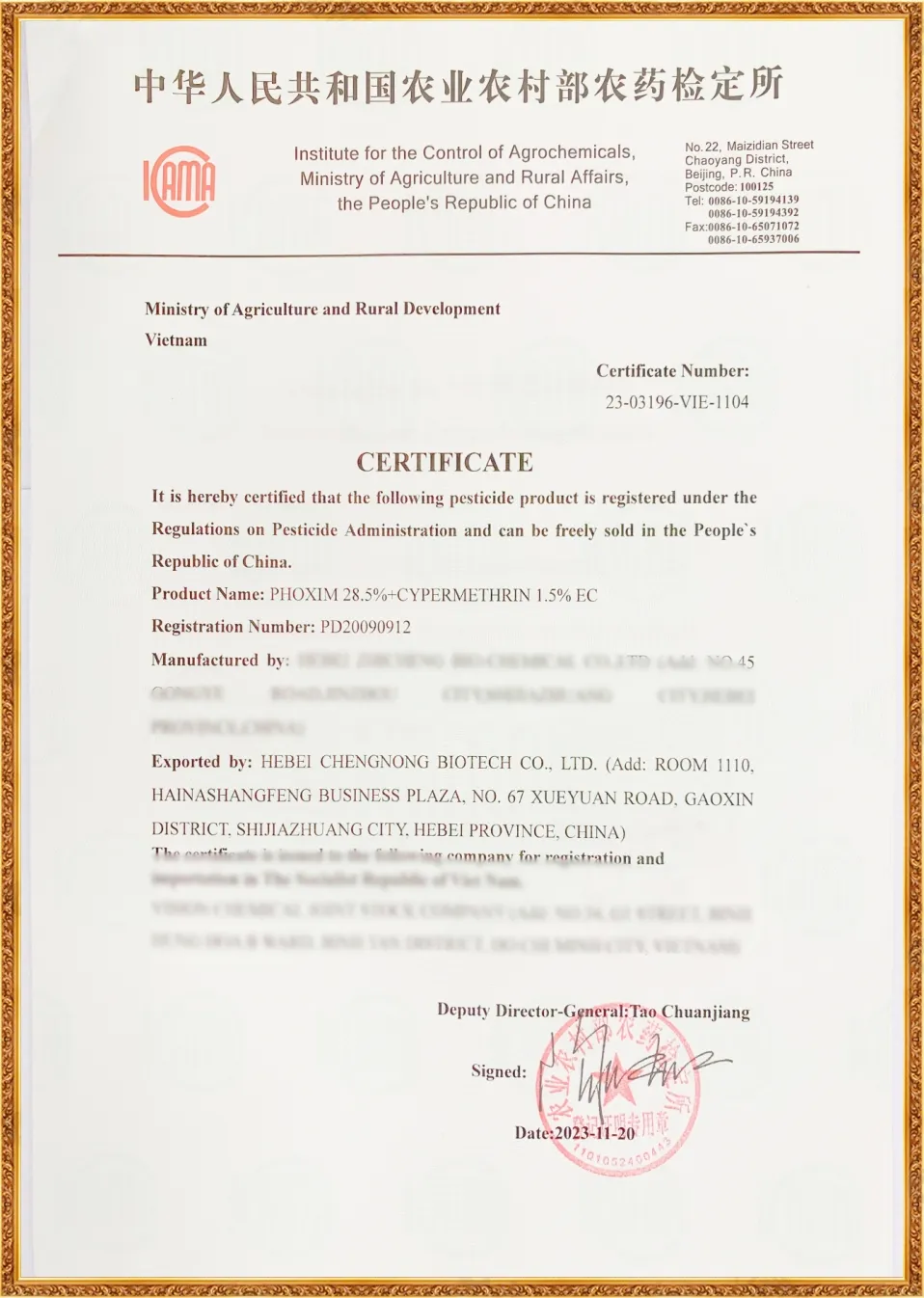
نومبر . 28, 2024 00:56 Back to list
Azoxystrobin Technical Support and Application Guidance for Optimal Crop Protection
Understanding Azoxystrobin A Comprehensive Overview of Its Technical Services
Azoxystrobin is a prominent fungicide belonging to the strobilurin class of chemicals, recognized for its broad-spectrum efficacy in controlling various fungal diseases in agricultural crops. It has gained popularity worldwide due to its excellent effectiveness against a range of pathogens, its mode of action, and its favorable environmental profile. In this article, we will explore the technical services associated with azoxystrobin, discussing its application, effectiveness, and the ongoing support provided to users.
The Mechanism of Action
Azoxystrobin acts by inhibiting mitochondrial respiration in fungi, disrupting cellular energy production. This mode of action distinguishes it from many traditional fungicides, making it effective against resistant strains of pathogens. By interfering with the electron transport chain, azoxystrobin effectively halts the growth and spread of fungal infections, providing a robust defense for crops. This also means that azoxystrobin can be integrated into diverse disease management programs that require careful rotation of fungicide products to mitigate resistance.
Application Techniques
The versatility of azoxystrobin allows for various application techniques, including foliar sprays, soil drenches, and seed treatments. Each method caters to specific crops and diseases
1. Foliar Sprays This is the most common application method where azoxystrobin is sprayed directly on plant leaves. It is crucial for controlling leaf-infecting fungi and offers both curative and preventive protection.
2. Soil Drenches For diseases that affect the root system, soil drenches ensure the fungicide penetrates the soil effectively, providing systemic protection as it is absorbed by the roots.
3. Seed Treatments When applied to seeds before planting, azoxystrobin helps protect young plants during their vulnerable stages, enhancing their vigor and overall yield.
Crop Protection and Efficacy
Azoxystrobin is effective against a wide variety of fungal pathogens, including those causing powdery mildew, rusts, and blights in crops such as cereals, fruits, and vegetables. Its preventive and curative activity not only aids in disease management but also helps prolong the shelf life of produce post-harvest. Consequently, crop producers benefit from increased yield quality and quantity, contributing significantly to economic sustainability in agriculture.
azoxystrobin technical service

Environmental and Safety Profiles
One of the appealing characteristics of azoxystrobin is its relatively low toxicity to non-target organisms, including beneficial insects and wildlife. This advantageous safety profile makes it a preferred choice for integrated pest management (IPM) practices, promoting sustainable agricultural practices. However, it is important for users to follow label instructions meticulously to minimize any potential impact on the environment.
Technical Services and Support
To maximize the effectiveness of azoxystrobin, manufacturers offer various technical services aimed at supporting growers in applying this fungicide efficiently. These services typically include
1. Educational Resources Informative materials are provided to help farmers understand the proper use, benefits, and application techniques of azoxystrobin.
2. Field Trials Conducting field trials allows for data collection on efficacy and optimal application conditions, informing best practices.
3. Consultation Services Technical support personnel are available to assist growers in diagnosing plant diseases, advising on the most effective treatment strategies, and addressing any challenges they might face during application.
4. Workshops and Training Regular workshops and training sessions equip farmers with the knowledge and skills needed to implement azoxystrobin in their pest management programs effectively.
5. Research and Development Continuous investment in R&D ensures that advancements in azoxystrobin formulation and application technology keep pace with the evolving challenges in agriculture.
Conclusion
In summary, azoxystrobin is a crucial component in modern agricultural practices, offering effective disease control with a relatively safe environmental profile. Through ongoing technical services and support, users are empowered to implement this fungicide effectively, enhancing crop productivity and sustainability. As agricultural demands grow, the role of azoxystrobin in ensuring healthy crops and resilient farming systems will continue to be vital in global food security efforts.
-
Emamectin Benzoate: AI-Optimized Pest Control Solution
NewsAug.01,2025
-
Best Abamectin 95% | Top Pesticide for Crop Protection
NewsJul.31,2025
-
Insecticide Spirotetramat 11% + Thiacloprid 11% SC at Good Price
NewsJul.30,2025
-
Best Abamectin SDS - Premium Quality & Reliable Safety Data
NewsJul.29,2025
-
Agrochemicals Pesticides Solutions for Sustainable Farming
NewsJul.29,2025
-
High-Quality Tebuconazole Fungicide for Crop Protection at Best Price
NewsJul.29,2025
